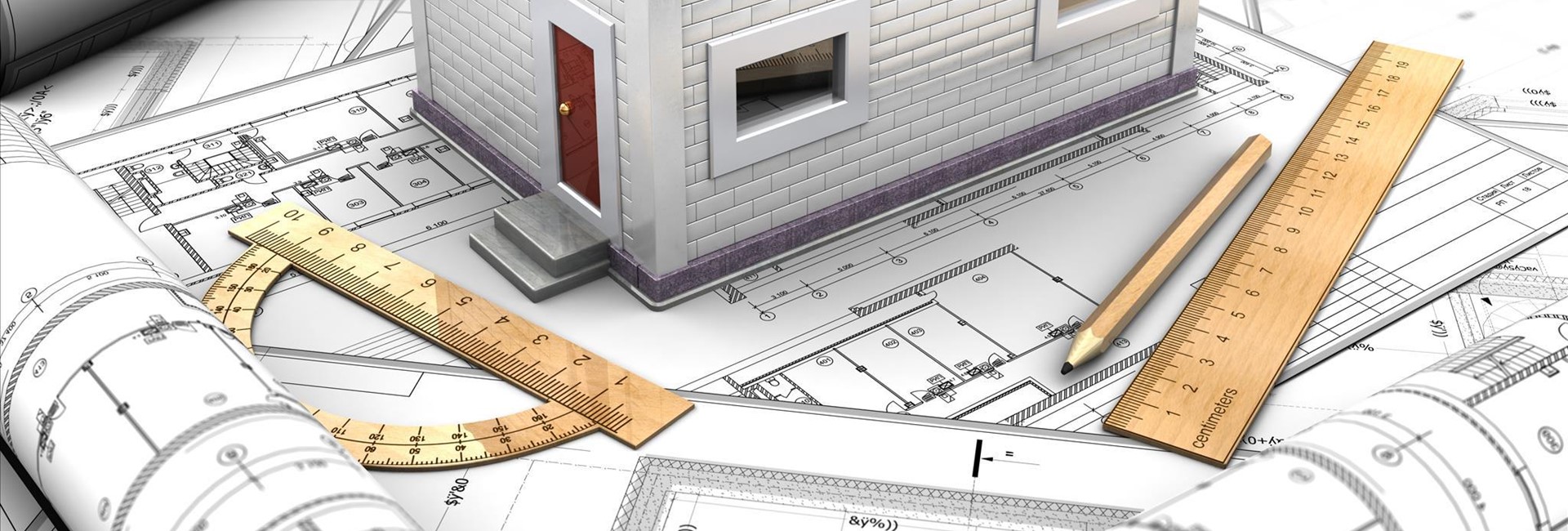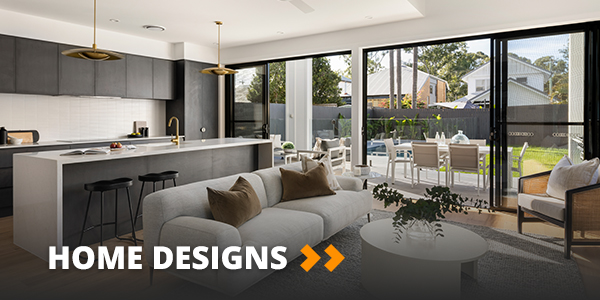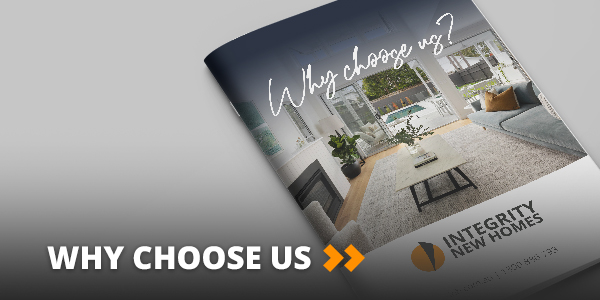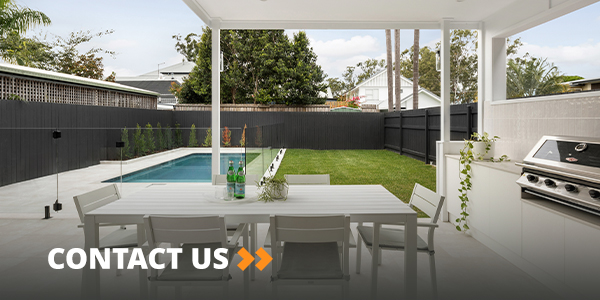When you're thinking of building using Passive Solar Home Design in the Gloucester region of Australia, the solar orientation of the Southern Hemisphere needs to be considered. Minimising the environmental impact, and maximising the year round comfort is an important consideration, that will save you thousands over the next few years. It would be a mistake to rely heavily on artificial heating and cooling sources for the home when correct orientation from the outset could have provided the home owner with a comfortable space to live in, that is economical to run. We call this Sustainable Building. In our Australian climate, the best aspect for solar design orientation for the site and especially the home, is that the main long axis of the building (the ridge line of the roof) runs East-West. This can be moved as much as 20 degrees without a large amount of the benefits of the roof angle being lost. If the roofline is running from East to West, then the main part of the home will be facing the North. This will help with the thermal comfort of the home to start.
Placing the Solar panels for electricity and hot water on the North western axis will ensure that the electricity switch doesn't have to be utilized much at all. Solar energy from well placed panels ensures the home has plenty of renewable energy available, making Solar Water heating systems the best way to cover your water and other heating requirements, and allows for the use of ceiling fans, lighting, even air conditioning without the electricity costs.
Insulation can help a lot with any orientation, but the prime resources that we have available to us, free of charge, are the Sun and the Wind.
Passive Design elements to consider are things such as less windows on the south side that would cause heat loss. (of course, if you live in North Queensland, you will want plenty of airflow and windows to the South)
Operable vents in the walls that open and close according to the breezes and heat of the local climate;
Windows that have moveable insulation such as purpose made window treatments or window quilts.
You want your living space to be comfortable all year round, cool in the summer months, warm in the winter months. Energy efficiency is key to ensuring the thermal energy is regulated, and that the home stays at a consistent and comfortable temperature.
Roof overhangs, otherwise known as eaves, are an important selection. They protect the internal home from the sun in the heat of summer, when the sun is high in the sky, but allow for the sun to permeate through the home in the winter months and the early morning sun, when the it sits low in the Northern sky.
The window placement is crucial to this as the natural light, and the passive cooling effects of being able to open the windows to allow natural ventilation, is one of the important design considerations for ambient air temperature.
Window design is a major influence on how the home feels and operates successfully to ensure there are huge energy savings over time. Double glazing or triple glazing to the windows provides massive levels of insulation to the otherwise very vulnerable part of a home. Windows generally allow in a huge amount of direct sunlight and heat as well as the cold, so this is one of the important elements to consider when you are wanting to build a passive solar home.
External Window coverings such as roll down shutters can be a helpful addition to keeping the flow of air to a minimum, ensuring consistent internal air temperature. Also a much needed addition in areas subject to bush fires, and they make the home more airtight, decreasing the chance of flames being able to get a hold anywhere on the home.
Ensuring that sunlight can permeate through the home each day, to bring the warmth in while the sun is shining and to keep the home at a nice temperature, a combination of good orientation and insulation is required. Building materials for this purpose are sometimes hard to source in Australia, but as more and more people are becoming aware of how great it is to live in a sustainable, eco friendly home, they are researching ways to bring these elements into their homes without the huge costs that are sometimes associated with a Passive Solar house.
Internally you can include features such as polished concrete flooring, a concrete or insulation wall that the sun can warm, encouraging heat transfer, and will hold temperature; ventilation ducts in the internal walls for even distrubution of the air. High ceilings also help with this as heat rises and can either flow out the high southern windows, or be trapped inside to allow the warmth to settle.
Design decisions start in the concept phase. Speak to your local Integrity New Homes sales consultant or builder to discuss ways to include great passive solar design into your new home and floor plan.
Placing the Solar panels for electricity and hot water on the North western axis will ensure that the electricity switch doesn't have to be utilized much at all. Solar energy from well placed panels ensures the home has plenty of renewable energy available, making Solar Water heating systems the best way to cover your water and other heating requirements, and allows for the use of ceiling fans, lighting, even air conditioning without the electricity costs.
Insulation can help a lot with any orientation, but the prime resources that we have available to us, free of charge, are the Sun and the Wind.
Passive Design elements to consider are things such as less windows on the south side that would cause heat loss. (of course, if you live in North Queensland, you will want plenty of airflow and windows to the South)
Operable vents in the walls that open and close according to the breezes and heat of the local climate;
Windows that have moveable insulation such as purpose made window treatments or window quilts.
You want your living space to be comfortable all year round, cool in the summer months, warm in the winter months. Energy efficiency is key to ensuring the thermal energy is regulated, and that the home stays at a consistent and comfortable temperature.
Roof overhangs, otherwise known as eaves, are an important selection. They protect the internal home from the sun in the heat of summer, when the sun is high in the sky, but allow for the sun to permeate through the home in the winter months and the early morning sun, when the it sits low in the Northern sky.
The window placement is crucial to this as the natural light, and the passive cooling effects of being able to open the windows to allow natural ventilation, is one of the important design considerations for ambient air temperature.
Window design is a major influence on how the home feels and operates successfully to ensure there are huge energy savings over time. Double glazing or triple glazing to the windows provides massive levels of insulation to the otherwise very vulnerable part of a home. Windows generally allow in a huge amount of direct sunlight and heat as well as the cold, so this is one of the important elements to consider when you are wanting to build a passive solar home.
External Window coverings such as roll down shutters can be a helpful addition to keeping the flow of air to a minimum, ensuring consistent internal air temperature. Also a much needed addition in areas subject to bush fires, and they make the home more airtight, decreasing the chance of flames being able to get a hold anywhere on the home.
Ensuring that sunlight can permeate through the home each day, to bring the warmth in while the sun is shining and to keep the home at a nice temperature, a combination of good orientation and insulation is required. Building materials for this purpose are sometimes hard to source in Australia, but as more and more people are becoming aware of how great it is to live in a sustainable, eco friendly home, they are researching ways to bring these elements into their homes without the huge costs that are sometimes associated with a Passive Solar house.
Internally you can include features such as polished concrete flooring, a concrete or insulation wall that the sun can warm, encouraging heat transfer, and will hold temperature; ventilation ducts in the internal walls for even distrubution of the air. High ceilings also help with this as heat rises and can either flow out the high southern windows, or be trapped inside to allow the warmth to settle.
Design decisions start in the concept phase. Speak to your local Integrity New Homes sales consultant or builder to discuss ways to include great passive solar design into your new home and floor plan.



